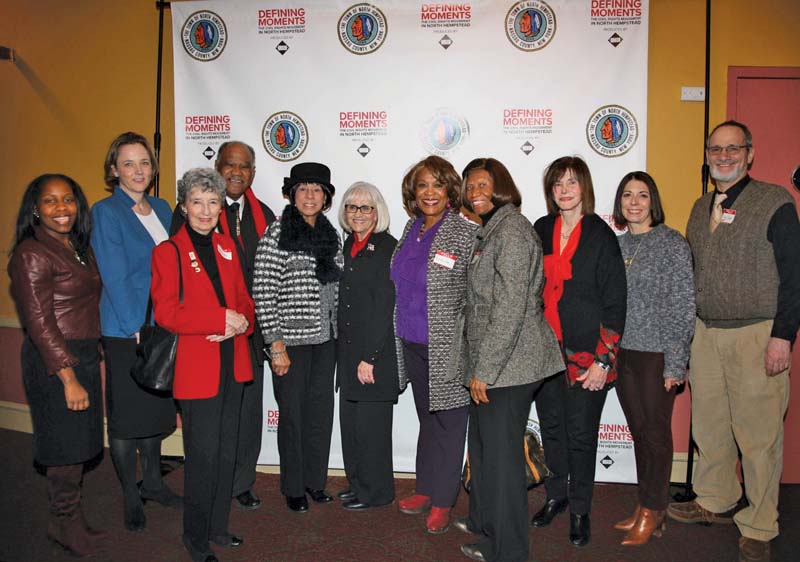
Levittown residents are not happy.
The Town of North Hempstead recently released a series of videos containing oral recountings of the area’s civil rights movement as told by the men and women who propelled it forward in the second half of the 20th Century. At least one of the videos mention Levittown, which is not in the Town of North Hempstead.
“Oral histories help us preserve eye witness accounts of major turning points in our nation’s past,” Town of North Hempstead Supervisor Judi Bosworth said in a press release. “Nothing can replace hearing events described in a person’s own words. The people included in our civil rights oral history library have given us a wonderful gift and we are so grateful to them.”
However, the 11 videos that were posted online at www.mynhtv.com/civilrights have infuriated members of the Levittown community.
“The Town of North Hempstead is a viper pit of political corruption,” Paul Manton, president of the Levittown Historical Society, said. “What better way to distract the people than to re-hash something that is from more than seven decades ago, not even in the Town of North Hempstead, and not even true. It is really a war against the present.”
The main video that discusses Levittown in the series is one featuring Saul Weinstein. A leader of the local NAACP chapter, Weinstein discusses his own personal attempt to “desegregate Levittown and other areas that were predominantly white.”
“The black families who moved in were made to feel so unwelcome in that time period that they moved out after a couple of years,” Weinstein said in the video. “There’s a lot of racism on Long Island.”
But Manton points to several reasons why Levittown, to this day, has been mostly Caucasian. Among them are socioeconomic reasons, such as the price range of homes (based on lot sizes, designs, etc.) and not having much public transportation. He cites Levittown as a region with “very complex economic, demographic and historical issues.”
“This whole obsessive fetish-like preoccupation with the ‘whites only’ clause is like making a movie about the events of Dec. 7, 1941 and making the principal focus the fact that the U.S. Navy was a racially segregated branch of the armed services and the Japanese attack and U.S. entry into World War II a mere footnote,” Manton wrote.
When suburbia started in 1947, William Levitt’s Levitt & Sons was allegedly abiding to a strict code. Clause 25 of the housing agreement signed by residents, written in all capital letters, forbade houses from being “used or occupied by any person other than members of the Caucasian race.” This meant African-Americans and Jewish people would have barriers to cross if they wanted to live in this affordable neighborhood after returning from serving the nation post-World War II, as well as the GI bill, which benefited Caucasians more than others.
However, as time went on, Jewish families were allowed to move in. African-Americans, though, were still discriminated against. Manton said the clause was only in effect from 1947-48, when original buyers were purchasing their homes.
“William Levitt was personally opposed to such policies, said so in interviews and in private conversations with people who subsequently related the contents of those conversations to me,” Manton said. “Levitt was quite progressive. He hired black workers at a time when many unions would not allow black men to become members.”
Until the 1948 Supreme Court case, Shelley v. Kraemer, many housing developments had similar clauses. But the case made it clear that developers couldn’t officially discriminate while selling homes.
Of Levittown’s more than 50,000 residents to this day, only 1.4 percent identify as African-American, according to the U.S. Census, which was updated in July 2018.
“The Levittown story, as I call it, is the story of the development of mass-production, civil engineering, marketing, purchasing, labor and business management techniques that spearheaded the transition of scores of millions of Americans from working class renters to middle class homeowners and came to be emulated all over the world,” Manton said.
While it might be in the past, the Town of North Hempstead feels it is important to bring up Levittown’s controversial beginnings 72 years later.
“So why not keep people in an uproar about a 15th-Century Italian explorer?” Manton rhetorically asked. “Why not keep citizens living in Southern cities up-in-arms about statues of Robert E. Lee? The Town of North Hempstead now joins the crowd.”
Additional information contributed by Mike Adams.
































